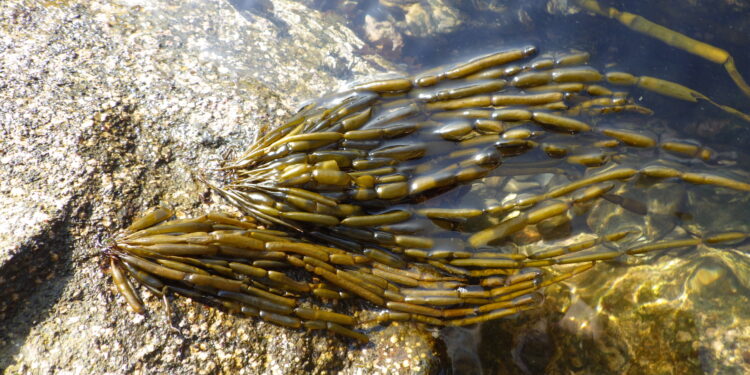Surprisingly, populations of brown algae in the Sea of Japan, called “Amazons,” were composed exclusively of females. Credit: Dr. Masakazu Hoshino
Researchers from the Max Planck Institute for Biology in Tübingen and Kobe University have discovered populations of female brown algae that reproduce from unfertilized gametes and thrive without males. In a study published in Nature Ecology and EvolutionThey used “Amazonian” algae to shed light on the phenotypic and genetic consequences of the transition from sexual to asexual reproduction.
The researchers discovered several populations of brown seaweed in the sea off the coast of Japan that, surprisingly, were exclusively female. These populations emerged about 1 to 2 million years ago and were later nicknamed “Amazons” because of their unique ability to reproduce alone. The team compared pairs of sexual individuals and Amazons to understand how Amazon populations emerged and how they thrive without males.
“We were puzzled,” said Dr. Masakazu Hoshino, the study’s first author. “This is a unique opportunity to understand the molecular basis of the transition from sexual to asexual reproduction and to understand how females can live without males for millions of years.”
The female releases gametes into the seawater, which develop into adult females identical to the parent by parthenogenesis (from the Greek “parthenos”, meaning virgin and “genesis”, meaning origin). Parthenogenesis is a form of asexual reproduction in which an unfertilized egg develops into a new individual.
Since female gametes can undergo parthenogenesis, while male gametes generally cannot, it is possible that changes in the environment, such as changes in water temperature, may have led to an increase in the female-dominated population.
In the process of becoming asexual, Amazons have undergone striking alterations, such as the loss of a female-specific pheromone that attracts male gametes. The fact that Amazons are “less feminized” implies that feminine traits are costly and, therefore, are quickly lost when they are not needed: why produce a pheromone when males are no longer around? An asexual existence is more advantageous for Amazons, as evidenced by the evolution of new characteristics such as larger gametes, which provide more resources for parthenogenetic development.
Brown algae, distant relatives of animals and plants, play a vital role in coastal areas, providing the basis of life, much like trees in a forest. This study highlights the adaptability of their lifestyle, which allows them to thrive in diverse environments.
More information:
Masakazu Hoshino et al, Parallel loss of sexual reproduction in field populations of a brown alga sheds light on mechanisms underlying the emergence of asexuality, Nature Ecology and Evolution (2024). DOI: 10.1038/s41559-024-02490-w
Provided by the Max Planck Society
Quote:’Amazonian’ algae shed light on what happens to populations when females switch to asexual reproduction (2024, August 20) retrieved August 20, 2024 from
This document is subject to copyright. Apart from any fair dealing for the purpose of private study or research, no part may be reproduced without written permission. The content is provided for informational purposes only.



